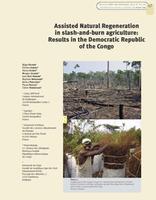-
Le projet CapMakala
- Le projet Makala
-
Les partenaires
-
L'animation
- Atelier "Le bois, une énergie domestique d’avenir pour la RDC ?" - 18 juin 2014
- Conférence Régionale - 11 au 13 juin 2013
- Sommet de la Francophonie, Kinshasa - 12 au 16 octobre 2012
- Foire de l'Economie Verte, Kinshasa - 10 au 14 octobre 2012
- 3ème comité de pilotage - 12 octobre 2011
- Journée "Si on coupe, on plante", Kisangani - 28 mai 2011
- Atelier Foire des PFNL, Kinshasa - 15 février 2011
- Commémoration de la Journée de l'Arbre, Kisantu - 5 décembre 2010
- 2ème comité de pilotage - 5 mai 2010
- Séminaire de lancement - 17 au 19 février 2009
- Les produits
Makala Les produits Publications Articles scientifiques 2015, Peltier and al., ANR in slash-and-burn agriculture
Les produits
- Lettres d'informations
- Notes de perspectives
- Guides pratiques
- Formation Bois énergie
-
Publications
- L'ouvrage du Projet Makala - Quand la ville mange la forêt
-
Articles scientifiques
- 2019, Péroches et al., Les Plans Simples de Gestion destinés à la production de bois-énergie en périphérie de Kinshasa
- 2018, Dubiez et al., Long term impact of Acacia auriculiformis woodlots on the carbon and nutrient contents
- 2016, Gond et al., Forest cover and carbon stock change dynamics
- 2015, Peltier and al., ANR in slash-and-burn agriculture
- 2015, Diowo et al., Caractérisation partielle de la régénération naturelle d’Albizia adianthifolia
- 2014, J.Schure et al., Institutions and access
- 2014, E.Dubiez et al., Perception locale des sols
- 2014, Schure J., Woodfuel for urban markets
- 2014, Ingram, V.et al., Gender implications
- 2014, J.Schure et al., Producing Woodfuel
- 2013, E.Dubiez et al., Le paysage comme outil d'aménagement
- 2013, A.Larzillière et al., La maquette interactive
- 2012, Schure J. et al., Contribution du bois énergie
- 2012, Schure J., Woodfuel and producers’ livelihoods in the Congo Basin.
- 2012, E.Dubiez et al., Managing forest resources
- 2012, Schure J. et al, Formalisation of charcoal value chains
- 2011, Vermeulen C. et al., Enjeux fonciers
- 2010, Nsimundele Nkondo L. et al., Conserver ou manger la forêt ?
- 2009, Bisiaux F. et al., Plantations industrielles et agroforesterie
- Rapports
- Fiches - Posters
- Rapports
- Vidéos
- Liens web utiles
2015, Peltier and al., ANR in slash-and-burn agriculture
Assisted Natural Regeneration in slash-and-burn agriculture: Results in the Democratic Republic of the Congo
Régis Peltier, Émilien Dubiez, Simon Diowo, Morgan Gigaud, Jean-Noël Marien, Baptiste Marquant, Adrien Peroches, Pierre Proces, Cédric Vermeulen
Bois et Forêts des Tropiques 2014, n°321 (3) p.67-79
Télécharger ici
ou sur le site de la revue http://bft.cirad.fr/
La revue Bois et Forêts des Tropiques , à l'interface de la recherche et du développement, est entièrement dédiée aux sciences et techniques de la foresterie en régions chaudes. Elle présente trimestriellement l'actualité de nombreuses disciplines scientifiques et techniques.
Human impacts on natural tropical forests in Central Africa are to a large extent linked to shifting cultivation and fuelwood extraction in peri-urban areas. This is especially true around the city of Kinshasa in the Democratic Republic of the Congo (DRC), which is why research was conducted in 2010 by the Makala Project in the city’s fuelwood supply basin. The aims were to adapt and test Assisted Natural Regeneration (ANR), improve slash-andburn crop systems and contribute to the enrichment of forest fallows.
Monitoring of the test areas found low survival rates for old trees conserved before the land was slashed and burned, due to the difficulty of controlling the fires. This means that the technique can only be used for the edges of plots, by gradually enriching hedgerows. In contrast, stumps shoots and root suckers from natural forest species protected by ANR during agricultural weeding grew rapidly inside the plots, thus rapidly establishing woody fallows without the need for costly inputs or heavy labour
In 2014, three and a half years after slashing and burning, biodiversity and biomass in these fallows is greater than in non-ANR fallows. Better charcoal and crop productivity and a slower rate of forest transition into savannah are expected. However, social acceptance, a critical factor in the large-scale dissemination of this innovation, must be investigated in the light of potential developments in traditional and modern land tenure rights.
© Cirad 2010 - Tous droits réservés - Informations légales

